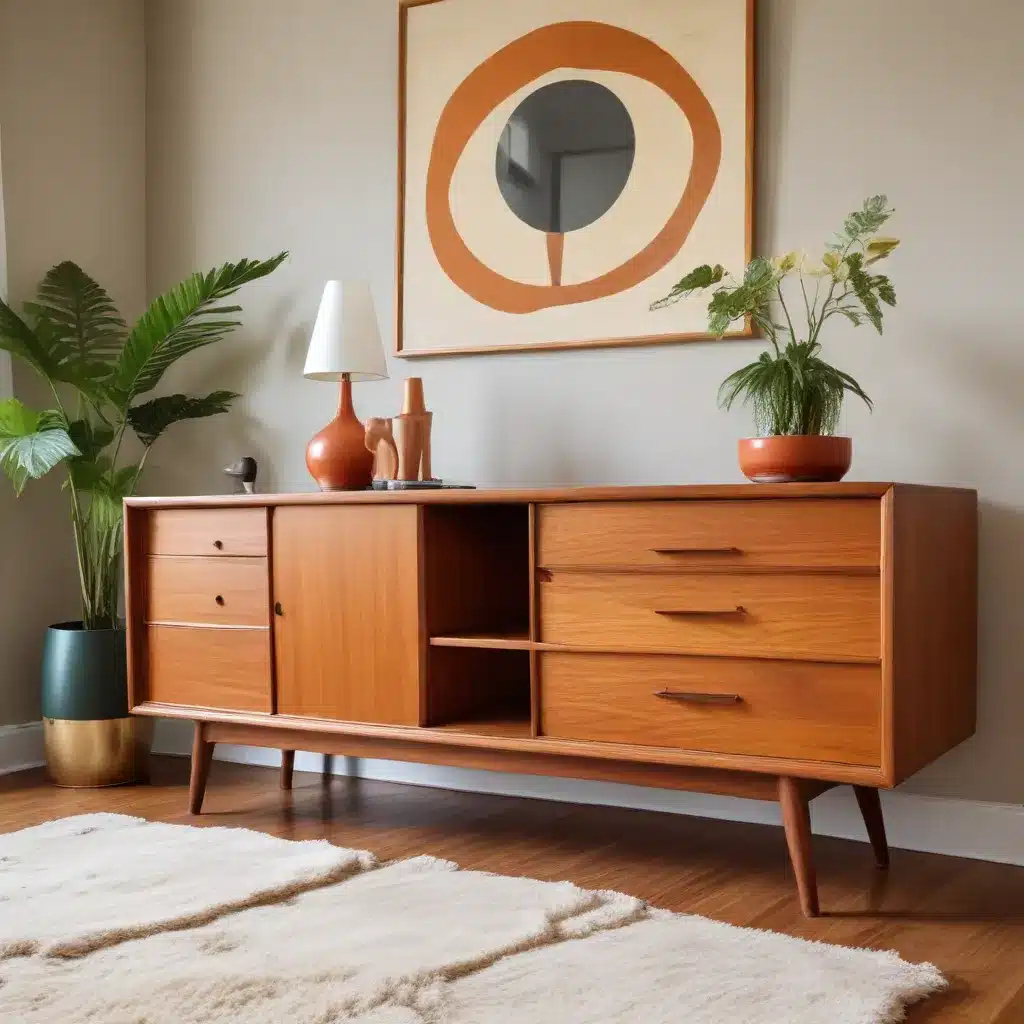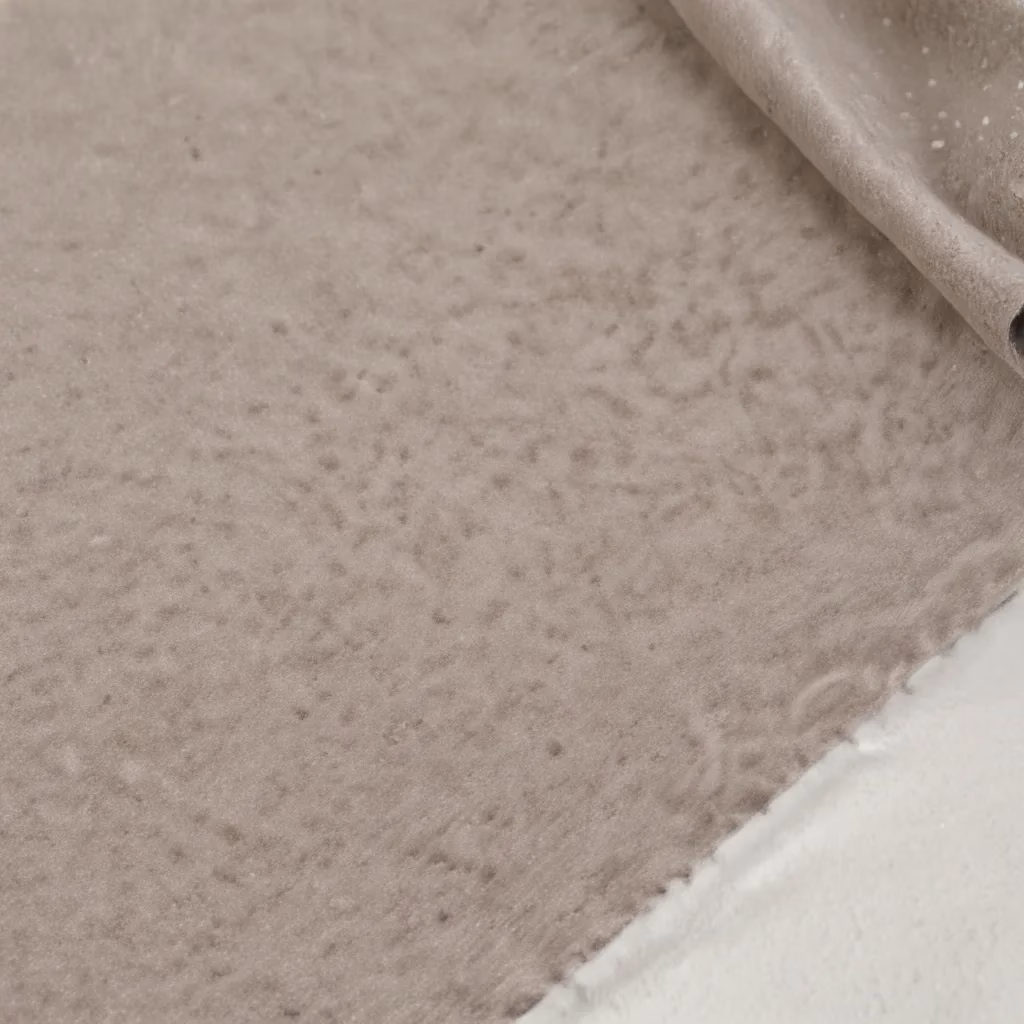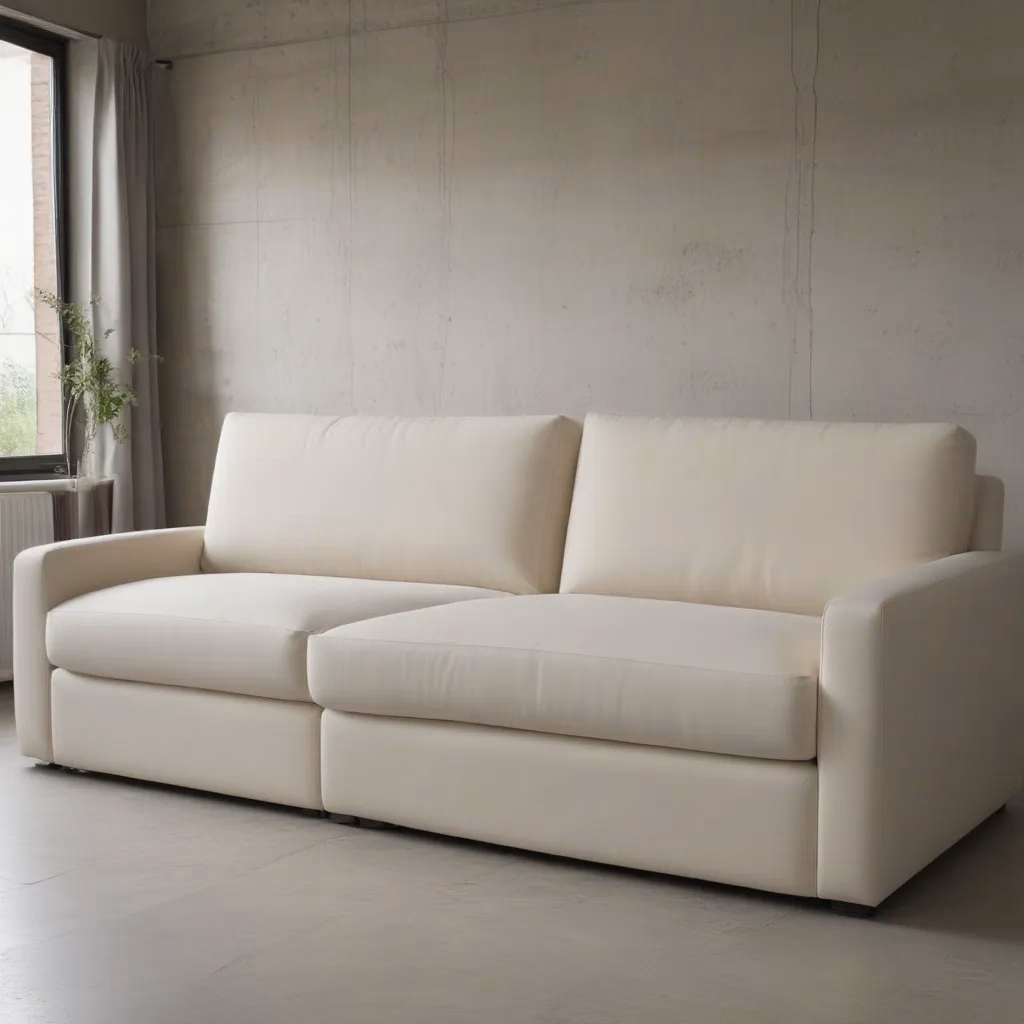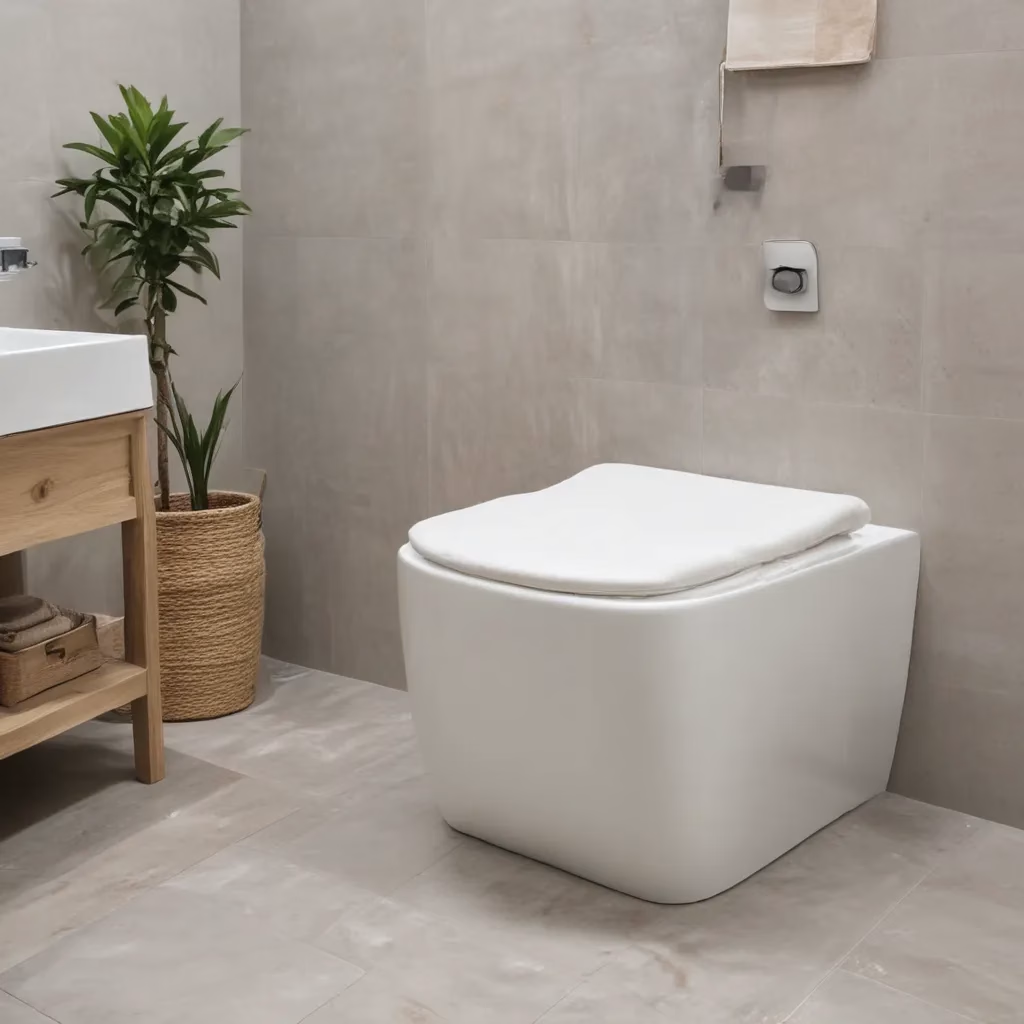
The Resurgence of Mid-Century Modern Design in the UK
Mid-century modern design has seen a remarkable comeback in recent years, with UK homeowners and interior designers alike embracing its clean lines, functional forms, and timeless appeal. This design movement, which originally flourished from the 1940s to the 1960s, has found new life in contemporary British homes, offering a perfect blend of nostalgia and modern sensibility.
The renewed interest in mid-century modern furniture stems from its ability to complement various interior styles while maintaining a distinct character. Its emphasis on simplicity, organic shapes, and the interplay between form and function resonates with today’s design-conscious consumers who appreciate both aesthetics and practicality.
In the UK, this revival is not merely a passing trend but a reflection of changing lifestyles and values. As urban living spaces become more compact, the streamlined profiles and multi-functional aspects of mid-century furniture prove increasingly relevant. Moreover, the growing awareness of sustainable living aligns well with the durability and timeless quality of authentic mid-century pieces, encouraging a shift away from disposable furniture towards long-lasting, well-crafted items.
Key Elements of Mid-Century Modern Furniture
Iconic Shapes and Forms
Mid-century modern furniture is characterised by its distinctive shapes and forms. Organic curves juxtaposed with geometric lines create a visual language that is both bold and harmonious. Tapered legs on chairs and tables, for instance, lend an air of lightness and elegance, while sculpted backrests on sofas and armchairs offer both comfort and visual interest.
The emphasis on clean lines and uncluttered silhouettes contributes to the furniture’s timeless appeal. These design principles allow mid-century pieces to integrate seamlessly into various interior styles, from minimalist to eclectic, making them versatile choices for UK homes.
Another hallmark of mid-century design is the celebration of natural materials. Wood, particularly teak, walnut, and oak, features prominently in furniture from this era. The warm tones and rich grains of these woods add depth and character to living spaces, creating a welcoming atmosphere that resonates with British sensibilities.
Functional Design and Ergonomics
Functionality is at the heart of mid-century modern furniture design. Each piece is crafted not just for aesthetic appeal but also for practical use. This approach aligns well with contemporary UK lifestyles, where space efficiency and multi-functionality are highly valued.
Ergonomics play a crucial role in mid-century seating designs. Chairs and sofas often feature slightly angled backrests and contoured seats that provide excellent support and comfort. This focus on user comfort makes mid-century furniture not just visually appealing but also a pleasure to use in daily life.
Storage solutions in mid-century design are equally ingenious. Sideboards, bookcases, and cabinets often incorporate clever compartments and adjustable shelving, offering flexible storage options that adapt to changing needs. This adaptability is particularly appreciated in UK homes where maximising space is often a priority.
Incorporating Mid-Century Modern Sofas in UK Homes
Choosing the Right Mid-Century Sofa
When selecting a mid-century modern sofa for a UK home, several factors should be considered to ensure it complements the space and meets functional needs. Here’s a comparison of popular mid-century sofa styles:
| Sofa Style | Characteristics | Best Suited For |
|---|---|---|
| Tuxedo | Straight arms at same height as back, clean lines | Formal living rooms, spacious settings |
| Danish Modern | Tapered wooden legs, organic curves | Casual living areas, smaller spaces |
| Chesterfield | Deep button tufting, rolled arms | Traditional interiors, study rooms |
| Sectional | Modular design, L or U shape | Large family rooms, open-plan layouts |
When choosing a mid-century sofa, consider the scale of your room. UK homes often have smaller living spaces compared to their American counterparts, so selecting a sofa that fits comfortably without overwhelming the room is crucial. Look for sofas with raised legs, which create an illusion of more floor space and contribute to a lighter, airier feel.
The fabric choice is equally important. While leather was popular in original mid-century designs, modern interpretations offer a wide range of upholstery options. Wool blends and textured fabrics in muted tones or bold geometric patterns can add authenticity to the mid-century look while suiting contemporary British tastes.
Styling Your Mid-Century Sofa
To create a cohesive mid-century modern look in your UK home, consider the following styling tips:
-
Complementary Furniture: Pair your mid-century sofa with other pieces from the same era. A sleek coffee table with tapered legs or a sculptural side chair can enhance the overall aesthetic.
-
Lighting: Incorporate statement lighting fixtures characteristic of mid-century design. Floor lamps with adjustable arms or pendant lights with geometric shades can add both functionality and style.
-
Colour Palette: Embrace a colour scheme typical of the mid-century era. Combine neutral base tones with pops of bold colours like mustard yellow, teal, or burnt orange through accessories and accent pieces.
-
Textiles: Layer your sofa with cushions and throws in textures and patterns reminiscent of the 1950s and 60s. Think abstract prints, geometric designs, or rich, tactile fabrics.
-
Wall Art: Adorn your walls with artwork that complements the mid-century vibe. Abstract prints, vintage travel posters, or atomic-inspired designs can serve as perfect backdrops for your furniture.
By thoughtfully integrating these elements, you can create a living space that captures the essence of mid-century modern design while reflecting your personal style and meeting the practical needs of contemporary UK living.
Materials and Fabrics in Mid-Century Modern Design
Popular Materials in Mid-Century Furniture
Mid-century modern furniture is renowned for its use of high-quality, durable materials that stand the test of time. In the UK market, several materials have gained popularity for their ability to blend authenticity with modern sensibilities:
-
Wood: Teak, walnut, and oak remain staple choices for mid-century furniture frames. These woods are prized for their rich grains, warm tones, and durability. UK consumers often appreciate the natural beauty and longevity of well-crafted wooden furniture.
-
Metal: Chrome and brass accents are common in mid-century designs, adding a touch of glamour and contrast to wooden elements. These metals are often used in chair legs, lamp bases, and decorative details.
-
Glass: Clear or smoked glass is frequently employed in coffee tables and cabinet doors, contributing to the light, airy feel characteristic of mid-century interiors.
-
Plastic: While less common in high-end pieces, moulded plastic chairs and accessories can add a pop of colour and a nod to the innovative materials of the era.
When selecting materials for your mid-century inspired furniture, consider both aesthetics and practicality. For instance, while authentic teak furniture is highly desirable, sustainable alternatives like responsibly sourced oak or reclaimed wood can offer similar appeal with added environmental benefits, aligning with growing eco-consciousness among UK consumers.
Fabric Choices for Mid-Century Upholstery
The choice of upholstery fabric can significantly impact both the look and comfort of mid-century furniture, particularly sofas and armchairs. Here’s a comparison of popular fabric options for mid-century upholstery in the UK market:
| Fabric Type | Characteristics | Durability | Maintenance |
|---|---|---|---|
| Wool | Warm, natural texture | High | Moderate |
| Leather | Luxurious, ages well | Very High | Low |
| Velvet | Rich, glamorous | Moderate | High |
| Linen | Light, casual | Moderate | Moderate |
| Synthetic blends | Versatile, cost-effective | High | Low |
When selecting fabrics for your mid-century furniture, consider factors such as:
-
Durability: If the piece will see heavy use, opt for hardwearing fabrics like wool or leather.
-
Maintenance: Consider how much time you’re willing to invest in upkeep. Leather and synthetic blends generally require less maintenance than velvet or linen.
-
Colour and Pattern: Mid-century designs often feature bold colours and geometric patterns. While neutral tones offer versatility, don’t shy away from vibrant hues or distinctive prints that can serve as focal points in your room.
-
Texture: The tactile quality of fabric can add depth to your interior. Mix smooth textures with nubby weaves for visual and sensory interest.
-
Climate Considerations: UK’s variable climate might influence your fabric choice. Breathable fabrics like linen can be comfortable in warmer months, while wool offers warmth in winter.
Remember, the right fabric not only enhances the aesthetic appeal of your mid-century furniture but also contributes to its comfort and longevity. Many UK retailers specialising in mid-century inspired furniture offer fabric samples, allowing you to test options in your home before making a final decision.
By carefully considering materials and fabrics, you can ensure your mid-century modern furniture not only looks authentic but also meets the practical demands of contemporary UK living.
Lighting in Mid-Century Modern Interiors
Iconic Mid-Century Lighting Designs
Lighting plays a crucial role in mid-century modern interiors, serving both functional and decorative purposes. Many iconic lighting designs from this era have become sought-after pieces in their own right, cherished for their innovative forms and timeless appeal.
Some of the most recognisable mid-century lighting styles include:
-
Sputnik Chandeliers: These starburst-shaped fixtures, inspired by the Space Age, feature multiple arms extending from a central sphere, each tipped with a bulb. They make dramatic statement pieces in living rooms or dining areas.
-
Arc Floor Lamps: Characterised by their long, curved arm extending from a heavy base, these lamps provide adjustable overhead lighting without the need for ceiling fixtures. They’re particularly useful in UK homes where ceiling heights may vary.
-
Mushroom Table Lamps: These feature rounded, often opaque shades that create a soft, diffused light. Their compact form makes them ideal for smaller UK living spaces.
-
Geometric Pendant Lights: Often crafted from materials like brass or coloured glass, these lights add visual interest and focused illumination over dining tables or kitchen islands.
When incorporating mid-century lighting into UK homes, consider the scale of your space and the existing decor. A large Sputnik chandelier might overwhelm a small room, while a collection of smaller pendant lights could create a similar impact without dominating the space.
Lighting Placement and Layering
Effective lighting in mid-century modern interiors goes beyond selecting stylish fixtures. Proper placement and layering of light sources are key to creating a well-lit, inviting space that honours the mid-century aesthetic while meeting contemporary needs.
Consider the following lighting strategies:
-
Ambient Lighting: Use ceiling fixtures or wall sconces to provide overall illumination. In UK homes with lower ceilings, flush-mount or semi-flush fixtures in mid-century styles can offer ample light without visually lowering the ceiling height.
-
Task Lighting: Incorporate adjustable desk lamps or reading lights near seating areas. Many mid-century designs feature movable arms or heads, allowing for precise direction of light where needed.
-
Accent Lighting: Use spotlights or track lighting to highlight artwork or architectural features. This can be particularly effective in showcasing the clean lines and organic forms of mid-century furniture and decor.
-
Natural Light: Maximise natural light, a key principle in mid-century design. Consider using sheer curtains or blinds that allow light to filter through while maintaining privacy, a important consideration in many UK neighbourhoods.
-
Dimmer Switches: Install dimmer switches to adjust light levels throughout the day. This not only saves energy but also allows you to create different moods in your space.
Here’s a guide to lighting placement in different rooms:
| Room | Primary Lighting | Secondary Lighting | Accent Lighting |
|---|---|---|---|
| Living Room | Ceiling fixture or recessed lights | Floor and table lamps | Wall sconces or picture lights |
| Dining Room | Statement pendant or chandelier | Buffet lamps | Under-cabinet lights |
| Bedroom | Ceiling fixture | Bedside table lamps | Reading lights or wall-mounted sconces |
| Home Office | Overhead light | Desk lamp | Bookshelf lighting |
By thoughtfully combining different types of lighting, you can create a layered, flexible lighting scheme that enhances the mid-century modern aesthetic of your UK home while providing practical illumination for various activities and times of day.
Remember, the goal is to create a balanced, harmonious environment where lighting complements the clean lines and organic forms of mid-century furniture. With careful selection and placement, lighting can become an integral part of your mid-century modern interior, enhancing both its functionality and its visual appeal.
Accessorising Your Mid-Century Modern Space
Selecting Authentic Mid-Century Accessories
Accessories play a vital role in completing the mid-century modern look, adding personality and authenticity to your space. When choosing accessories for your UK home, consider pieces that reflect the design principles and aesthetic of the era while complementing your existing furniture.
Key accessories to consider include:
-
Wall Clocks: Oversized, geometric wall clocks are quintessential mid-century pieces. Look for designs featuring sunburst patterns or simple, bold numerals.
-
Mirrors: Opt for mirrors with teak or walnut frames, or choose sunburst designs that echo the popular atomic motifs of the era.
-
Artwork: Abstract expressionist prints, vintage travel posters, or geometric art can add colour and visual interest to your walls.
-
Ceramics: Handcrafted pottery in organic shapes and earthy glazes can serve as both decorative objects and functional pieces.
-
Textiles: Incorporate cushions, throws, and rugs featuring bold geometric patterns or abstract designs typical of the period.
When selecting accessories, aim for a curated look rather than overcrowding your space. The mid-century aesthetic favours clean lines and uncluttered surfaces, so choose a few statement pieces that complement your furniture rather than competing with it.
Creating a Cohesive Mid-Century Look
To achieve a harmonious mid-century modern interior in your UK home, consider the following tips:
-
Colour Palette: Stick to a consistent colour scheme throughout your space. Mid-century interiors often feature a neutral base accented with bold colours. Consider using a 60-30-10 rule: 60% dominant colour (often a neutral), 30% secondary colour, and 10% accent colour.
-
Balance of Materials: Mix different materials to create visual interest. Combine wood, metal, glass, and textiles in a way that feels balanced and intentional.
-
Scale and Proportion: Pay attention to the size relationships between furniture pieces and accessories. Mid-century design often plays with scale, juxtaposing large statement pieces with more delicate accents.
-
Negative Space: Don’t be afraid of empty space. Mid-century interiors often have a spacious, uncluttered feel. Allow your key pieces room to breathe.
-
Greenery: Incorporate indoor plants to add life and organic shapes to your space. Large-leafed plants like Monstera or Fiddle Leaf Fig trees were popular in mid-century interiors and remain on-trend in UK homes.
Here’s a quick guide to accessorising different rooms in mid-century style:
| Room | Key Accessories | Colours | Materials |
|---|---|---|---|
| Living Room | Statement clock, abstract art, sculptural lamp | Warm neutrals with pops of bold colour | Wood, metal, glass |
| Dining Room | Oversized pendant light, bar cart, ceramic vase | Earth tones with metallic accents | Wood, brass, ceramics |
| Bedroom | Sunburst mirror, geometric rug, bedside sconces | Soft neutrals with a bold accent wall | Teak, linen, brass |
| Home Office | Desk organizer, abstract prints, task lamp | Muted tones with colourful accents | Walnut, steel, leather |
Remember, the key to successful mid-century modern accessorising is thoughtful curation. Each piece should serve a purpose, whether functional or purely aesthetic, and contribute to the overall harmony of your space.
By carefully selecting and arranging accessories, you can enhance the mid-century character of your UK home while reflecting your personal style. The result should be a space that feels both authentic to the era and comfortably contemporary, perfectly suited to modern British living.
Maintaining and Caring for Mid-Century Furniture
Preserving the Quality of Your Mid-Century Pieces
Proper care and maintenance are essential to preserve the beauty and integrity of mid-century modern furniture. Many of these pieces are considered investments, and with the right care, they can last for generations. Here are some tips for maintaining different materials commonly found in mid-century furniture:
- Wood:
- Dust regularly with a soft, dry cloth.
- Use a slightly damp cloth for deeper cleaning, followed by immediate drying.
- Apply a quality wood polish or oil periodically to nourish the wood and maintain its lustre.
-
Avoid placing wooden furniture in direct sunlight or near heat sources to prevent fading and drying.
-
Upholstery:
- Vacuum regularly using a soft brush attachment to remove dust and debris.
- Treat spills immediately by blotting (not rubbing) with a clean, dry cloth.
- Use fabric-specific cleaners for deeper cleaning, always testing on an inconspicuous area first.
-
Consider professional cleaning for valuable or delicate pieces.
-
Metal:
- Wipe clean with a soft, damp cloth and dry thoroughly to prevent water spots.
- For chrome or stainless steel, use a specific metal polish to maintain shine.
-
Address any signs of rust promptly to prevent spreading.
-
Glass:
- Clean with a standard glass cleaner or a solution of vinegar and water.
- Use a lint-free cloth to avoid streaks.
-
Be cautious when cleaning around metal fittings to prevent moisture from seeping underneath.
-
Leather:
- Dust regularly and wipe with a slightly damp cloth.
- Use a leather conditioner every 6-12 months to keep the leather supple and prevent cracking.
- Avoid placing leather furniture in direct sunlight to prevent fading and drying.
Restoration and Repair
Despite best efforts in maintenance, mid-century furniture may sometimes require restoration or repair. Here are some considerations for UK homeowners:
-
Professional vs. DIY: While minor repairs might be suitable for DIY, significant restoration work is often best left to professionals specialising in mid-century furniture. They have the expertise to address issues without compromising the piece’s value or authenticity.
-
Sourcing Original Materials: When replacing parts or refinishing surfaces, try to source materials that match the original as closely as possible. This might involve seeking out specialist suppliers of vintage or reproduction materials.
-
Upholstery Renewal: Re-upholstering can breathe new life into a piece while preserving its structure. Choose fabrics that are period-appropriate or that complement your existing decor.
-
Finish Restoration: For wooden pieces with damaged finishes, consider professional refinishing. The goal should be to restore the piece to its original glory rather than making it look brand new.
-
Hardware Replacement: If original hardware is damaged or missing, look for authentic replacements or high-quality reproductions that match the style and finish of the piece.
Here’s a quick guide to common mid-century furniture issues and their solutions:
| Issue | DIY Solution | Professional Solution |
|---|---|---|
| Scratches on wood | Touch-up with matching wood filler or crayon | Full refinishing |
| Loose joints | Regluing with wood glue | Disassembly and rebuilding |
| Fabric tears | Patch with matching fabric | Complete reupholstering |
| Rust on metal | Sanding and repainting small areas | Stripping and refinishing |
| Broken glass | Replacement with similar glass | Custom cutting of period-appropriate glass |
Remember, the value of many mid-century pieces lies in their originality and patina. Before undertaking any major restoration work, consider whether the intervention is necessary and how it might affect the piece’s character and value.
By maintaining your mid-century furniture with care and addressing any issues promptly and appropriately, you can ensure that these classic pieces continue to enhance your UK home for years to come. Regular care not only preserves the aesthetic appeal of your furniture but also protects your investment in these timeless designs.
Conclusion: Embracing Mid-Century Modern in Contemporary UK Homes
The resurgence of mid-century modern design in the UK is more than just a passing trend; it represents a timeless aesthetic that continues to resonate with homeowners and interior designers alike. Its enduring appeal lies in its ability to blend seamlessly with contemporary living spaces while offering a nod to the past.
As we’ve explored throughout this article, incorporating mid-century modern elements into your UK home involves more than simply purchasing a few iconic pieces. It’s about understanding the principles behind the design movement and thoughtfully applying them to create a cohesive, functional, and aesthetically pleasing living space.
Key takeaways for successfully integrating mid-century modern design in UK homes include:
-
Quality over Quantity: Invest in well-made, authentic pieces that will stand the test of time. Sites like Sofaspectacular offer a range of high-quality furniture options that can serve as centrepieces in your mid-century inspired room.
-
Balancing Old and New: While authentic vintage pieces add character, don’t be afraid to mix in contemporary items that complement the mid-century aesthetic. This balance creates a space that feels curated rather than like a time capsule.
-
Embracing Functionality: Remember that mid-century design prioritises function alongside form. Choose pieces that not only look good but also serve a practical purpose in your home.
-
Personalising Your Space: While adhering to mid-century principles, ensure your space reflects your personal style and meets the needs of modern living. Use accessories, artwork, and colour to make the space uniquely yours.
-
Proper Care and Maintenance: Invest time in maintaining your mid-century pieces to ensure they remain beautiful and functional for years to come.
By thoughtfully applying these principles, you can create a living space that captures the essence of mid-century modern design while being perfectly suited to contemporary UK lifestyles. The result is a home that feels both timeless and current, offering a serene retreat from the hustle and bustle of modern life.
As you embark on your mid-century modern design journey, remember that the goal is not to create a museum-like recreation of a 1950s home, but rather to draw inspiration from this influential design era to create a space that works for you today. With its emphasis on clean lines, functionality, and connection to nature, mid-century modern design offers a versatile foundation for creating a home that is both stylish and livable.
Whether you’re furnishing a compact city flat or a spacious suburban home, the principles of mid-century modern design can be adapted to suit your space and needs. By carefully selecting furniture, lighting, and accessories that align with this aesthetic, you can create a cohesive and inviting environment that stands the test of time.
In essence, the revival of mid-century modern design in UK homes is not just about replicating a look from the past; it’s about embracing a design philosophy that values simplicity, functionality, and timeless elegance. As you incorporate these elements into your home, you’re not just following a trend, but participating in a design movement that continues to shape how we think about and interact with our living spaces.



